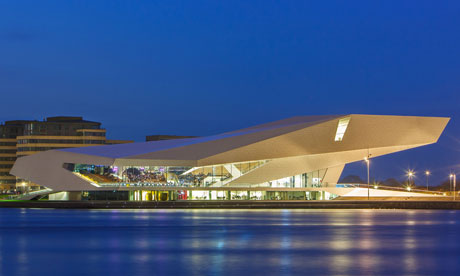Article originally published on http://www.guardian.co.uk/travel
At the medieval heart of Amsterdam is the Oude Kerk. The church, founded in 1213, is the city’s oldest building, a stripped back Calvinist beauty with pearly light pouring through its tall windows, over its gilded carvings and across its stone flagged floors. It is the kind of serene interior captured in the luminous oils of the Dutch Masters.
Outside, the activities are rather less sacred. The Oude Kerk is at the centre of Europe‘s largest red-light district – the Wallen – and is ringed by hot-pink shopfronts where sex workers tap the windows to attract any likely passing trade. Opposite the church door is one of dozens of cannabis cafés where you can spark up a joint of Lemon Haze and waste the day away.
For decades, such scenes have been regarded as examples of civilised Dutch tolerance – a “whatever blows your hair back” attitude – butAmsterdam has had enough. The municipality says its tolerance is being abused as the centre is being overwhelmed by tawdry sex shows, drug dealing and British stag-party weekenders. Organised crime has moved in and many businesses are fronts for money-laundering and human trafficking. So the city is rebranding itself, and has invested upwards of €700m on remaking its cultural institutions over the past decade.
The Van Gogh museum has been renovated and reopens in May, theNational Maritime Museum has been made ship-shape and the new EYE Film Institute Netherlands has opened in a futuristic building in the Overhoeks neighbourhood. The Stedelijk Museum of contemporary art, meanwhile, has been treated to a bath-like extension the size of a city block.
 ‘The EYE Film Institute Netherlands has opened in a futuristic building’: Amsterdam’s answer to London’s National Film Theatre. Photograph: Henk Meijer /Alamy
‘The EYE Film Institute Netherlands has opened in a futuristic building’: Amsterdam’s answer to London’s National Film Theatre. Photograph: Henk Meijer /Alamy
Crowning these efforts, the Rijksmuseum – the Dutch answer to the Louvre – reopened to the public this weekend after a decade-long closure. Under a €375m rebuilding project led by the Spanish architects Cruz y Ortiz, the museum’s two halves have been united by an undercroft that joins its two courtyards. The remodelling has been so extensive that only Rembrandt’s Night Watch remains in its original location among 8,000 objects in its 80 rooms. The central Gallery of Honour, containing works by Vermeer and Pieter de Hooch, has had a century of whitewash removed and its original late 19th-century frescos restored and reinstated.
Elsewhere, canvases are displayed alongside furniture of the same period, white-marble busts illuminated dramatically against dark charcoal walls. In the special collections section, small items have been gathered to form art installations – a wall of intricate metal keys, for example, is displayed opposite a vitrine full of locked boxes; an entire fleet of miniature wooden ships sails alongside a row of model lighthouses.
Meanwhile Project 1012, named after the red-light district’s postcode, aims to clean up the neighbourhood. The initiative began in 2007 and plans the closure of 200 out of 480 window brothels, and 26 out of 76 cannabis coffee houses; there are also plans to turn the sleazy Damrak – the main street into town from Centraal railway station – into a “red carpet” of welcome to the city, with “upmarket shopping, fashion and cuisine”. Right-wing politicians called for tourists to be banned entirely from the coffee shops, a step too far for the municipality of Amsterdam, which has just won an exemption to the weed law. But it has negotiated a €25m deal to buy 18 brothels and gambling dens from their owners and put them to new uses, following the 2008 experiments Red Light Fashion and Red Light Design in which young Dutch designers were allowed to live and work rent free for a year in former brothels and use their windows for showcases. Since then, a former gambling house has been transformed into the Mata Hari bar, and a micro-brewery, deli, florist and homewares stores have also opened nearby.
The poster project for Project 1012 is Anna, a fine-dining restaurant carved out of an old gallery and printworks by former club owner Michiel Kleiss. “You don’t need much critical mass around here,” Kleiss tells me. “If you are doing something classy, it immediately works.”
The Oude Kerk has been known as Amsterdam’s living room throughout its history, and these days it is also used as a concert hall and exhibition space as part of its restoration. Across the square, Orpheu de Jong runs Red Light Radio and has a recording studio in the window. A few doors down his sister Afaina, a former architect, has opened the Ultra de la Rue gallery. Both were brought up only a few minutes from the red-light district but say they didn’t set foot in it until they were adults. “It’s a good thing for the area,” says Afaina, but both she and Orpheu are wary of the area losing its edge entirely.
Stand in front of the Rijksmuseum’s charcoal-painted walls and look again at those Golden Age pictures of church interiors and you will find depictions of dogs cavorting, gallants chatting up maids and market stalls trading within the house of God. There will always be many shades of grey in Amsterdam.













